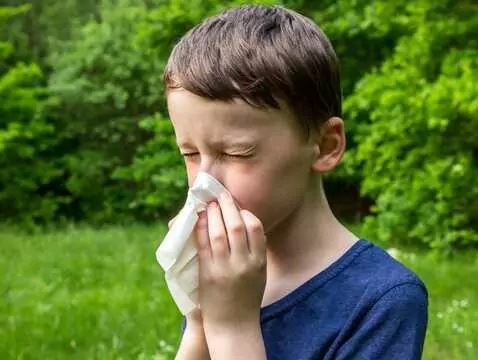Atopic dermatitis (AD) is a chronic, relapsing inflammatory skin disease accompanied by intense pruritus. Depending on the severity of the disease, therapy includes non-pharmacological and general and topical pharmacological management.
The cornerstone of AD treatment is a combination of daily emollient therapy and appropriate skin care with anti-inflammatory treatment and avoidance of contact with provocative allergens and irritants. The treatment of AD requires the cooperation of the patient's parents with a dermatologist, allergologist and paediatrician.
Atopic dermatitis (AD)
Is a chronic, relapsing inflammatory skin disease accompanied by severe pruritus. It is one of the most common dermatological diseases, affecting more than 25% of children and approximately 2-3% of adults. In 80% of children the symptoms appear in the first year of life and in 95% before the age of 5. It is a hereditary disease, the onset and course of which are influenced by various environmental factors.
Features of AD
The most characteristic feature in AD is dry skin. The lesions that appear in the acute course of the disease are usually papules located on an inflammatory base, while the chronic course is characterised by dry lesions, scaling and lichenisation. The skin inflammation is localised in the youngest children on the cheeks and scalp, in older infants lesions can be seen on the whole trunk and outer surfaces of the limbs, in older children on the elbow pits, knee pits, ankle joints, around the eyes, mouth, neck, upper chest, backs of the hands and feet and wrists. AD can co-exist with food and airborne allergies. In older adolescent and adult children, the role of contact allergens increases significantly. Depending on the severity of the disease, therapy includes non-pharmacological and general and topical pharmacological management.
Treatment
The cornerstone of AD treatment is a combination of daily emollient therapy and appropriate skin care with anti-inflammatory treatment and avoidance of contact with provocative allergens and irritants. Non-specific provocative factors that can irritate the skin and cause erythema are mechanical (contact with wool and other irritating fibres), chemical (acids, bleach, solvents, water) or biological (microorganisms). They also include tobacco smoke, volatile organic components and car exhaust. Specific exacerbators include airborne allergens, especially house dust mites.
The key preparations used in both exacerbation and remission of the disease are emollients. These include emulsions and bath gels, creams, lotions and hair shampoos. Lubrication of dry skin reduces itching and promotes relief of inflammation. Regular, frequent use of emollients 3-4 times a day reduces the need for topical glucocorticosteroids.
During the course of the disease, the epidermal barrier is damaged. Its reconstruction can be achieved by using so-called active emollients, i.e. a mixture of fats physiologically present in the stratum corneum. In AD, active emollients with a predominance of ceramides are most effective, as ceramides are most deficient in this disease. Sealing of the epidermal barrier occurs after each application of emollients, but a sustained improvement in barrier function only occurs after 2-4 weeks of systematic treatment, which is related to the physiological process of epidermal differentiation, the final product of which is a stratum corneum rich in lipid membranes.

photo panthemedia
An important part of treatment is the restoration of proper epidermal hydration. This can be achieved by using emollients containing urea in addition to lipids - the main component of the natural moisturising factor (NMI), whose role is to retain water - and glycerol, which is responsible for transporting water from the dermis to the epidermis. In children under 2 years of age, the use of propylene glycol-based emollients is not recommended due to its irritant effect. It is also inadvisable to moisturise the skin with preparations containing protein allergens and haptens such as oats or peanuts.









